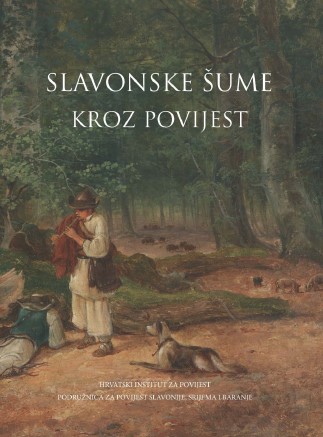Šume i drveće u antici južne Panonije
Forests and Timber in Ancient Southern Pannonia
Author(s): Josip Parat
Subject(s): Archaeology, Regional Geography, Historical Geography, Environmental Geography, Ancient World
Published by: Hrvatski institut za povijest
Keywords: Pannonia; antiquity; environment; forest; wood; ecohistory; archaeology;
Summary/Abstract: Wood was indisputably one of the most valuable natural resources of the Roman province of Pannonia. The southern part of the province, delimited by the Sava, Drava and Danube rivers, was no different. Though sporadically and briefly, several authors of the Principate period testify to the fact that this was a densely wooded area. Short notes from the literary accounts of Pliny the Elder and Appian of Alexandria are particularly instructive in this regard. No less valuable are the scattered archaeological remains which provide further evidence of the types of trees and their uses. Likewise, both stone inscriptions and figurative monuments shed some light on the complex human-nature relationship. This paper examines literary, archaeological and epigraphic records pertinent to the southern part of the Roman province of Pannonia, in an effort to offer a more coherent picture of forests and timber in the antiquity. Pliny’s mention of the acorn-bearing Pannonia suggests that the oak was the most prevalent species in the province. Referring to this area during the Roman conquests, Appian also pointed out that Pannonia was a wooded region. Others drew attention to the problem of human interventions in the environment. Forests and marshlands covered a considerable area in southern Pannonia, and soil amelioration measures were carried out on several occasions up to the modern times. Literary and epigraphic data implies that Pannonian forests were popular hunting areas for the local élite. Although direct proof of forest managment and ownership is yet to be found, two stone inscriptions unearthed in the north of the province indicate that the forests were either the emperor’s personal property, or were leased to local tenants. Archaeological excavations conducted in the urban centres of southern Pannonia showed that the first construction phase, dated to the early 1st c. AD, was predominantly marked by the use of timber. Classical authors refer to a whole range of different species used: oak, beech, fir, hazel, ash, alder, as well as different types of willow. Based on these reports, we can get a sense of how Romans used timber in the everyday life of the province. Votive monuments were used to examine the spiritual connection between the local population and the forests. It is worth noting that Silvanus was the second most popular deity in ancient Pannonia. The inscriptions and reliefs dedicated to him are regularly found not only in ancient spa centres, but also along the boundaries of private properties. It thus seems probable that the locals worshipped the deity as the protector of private estates on the edges of uncultivated wooded areas.
- Page Range: 15-38
- Page Count: 24
- Publication Year: 2018
- Language: Croatian
- Content File-PDF

